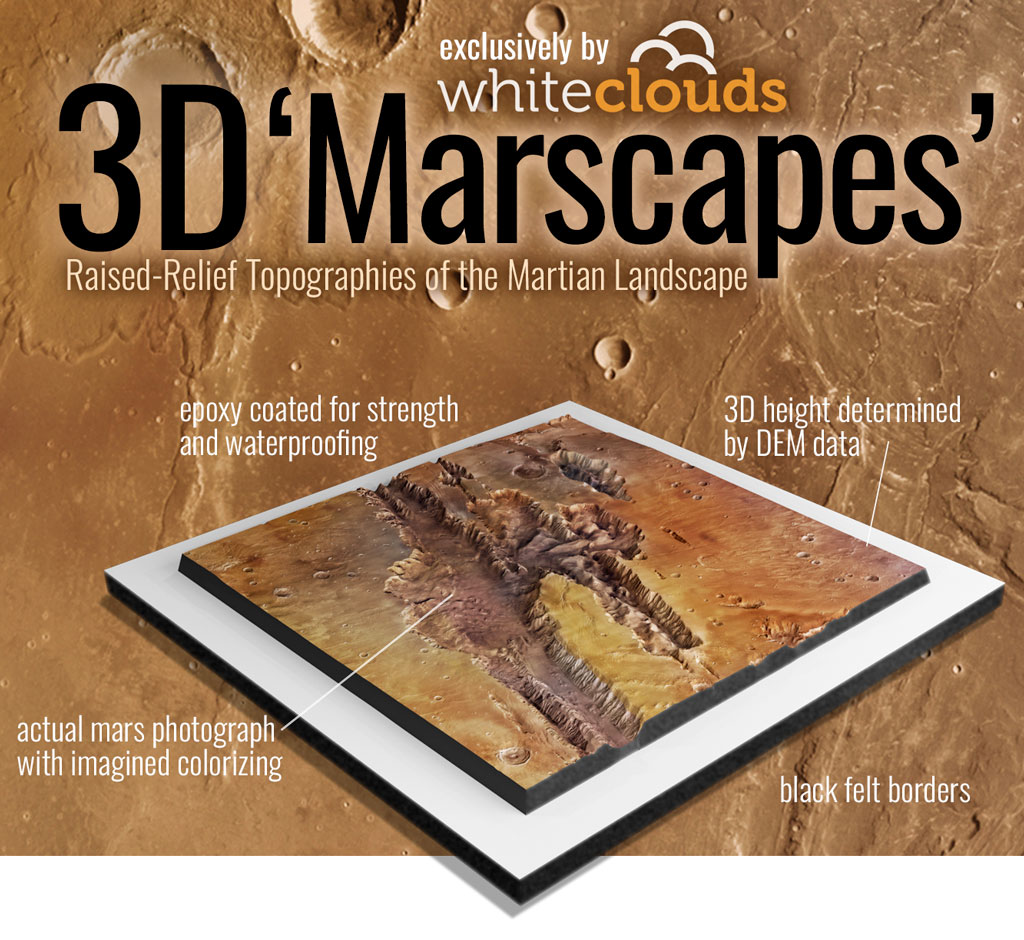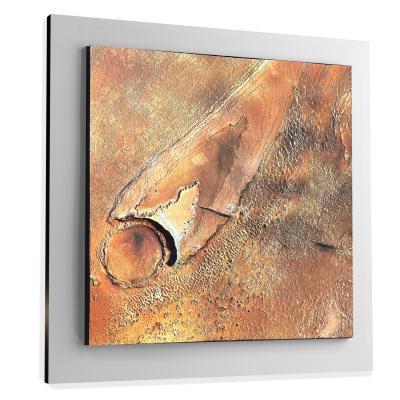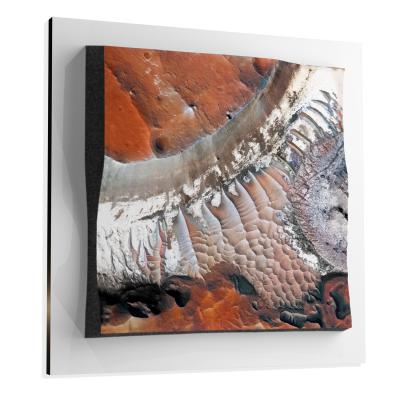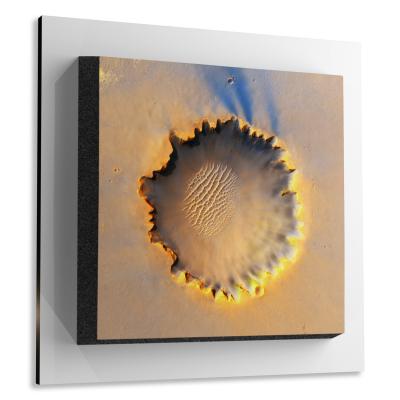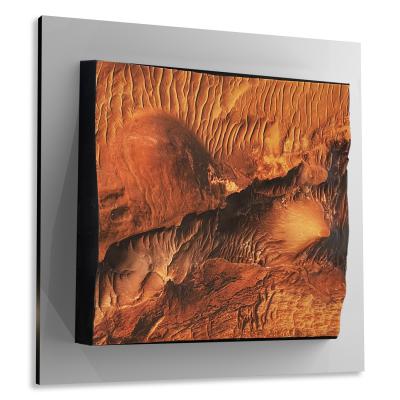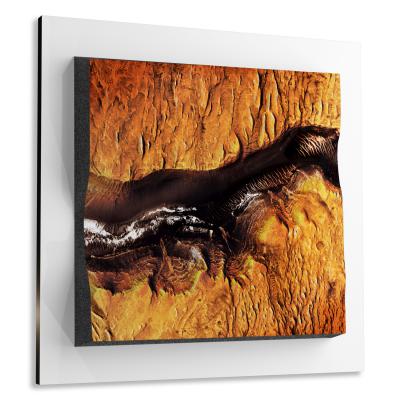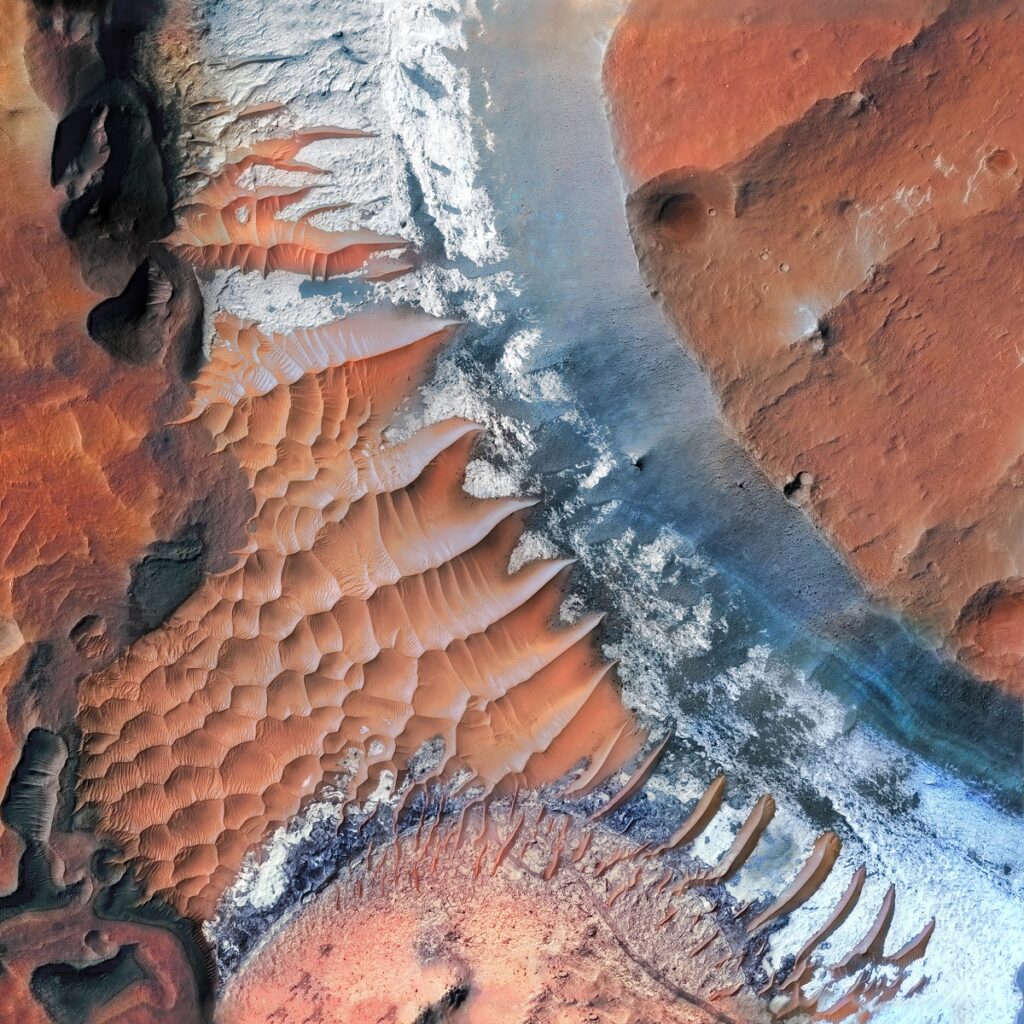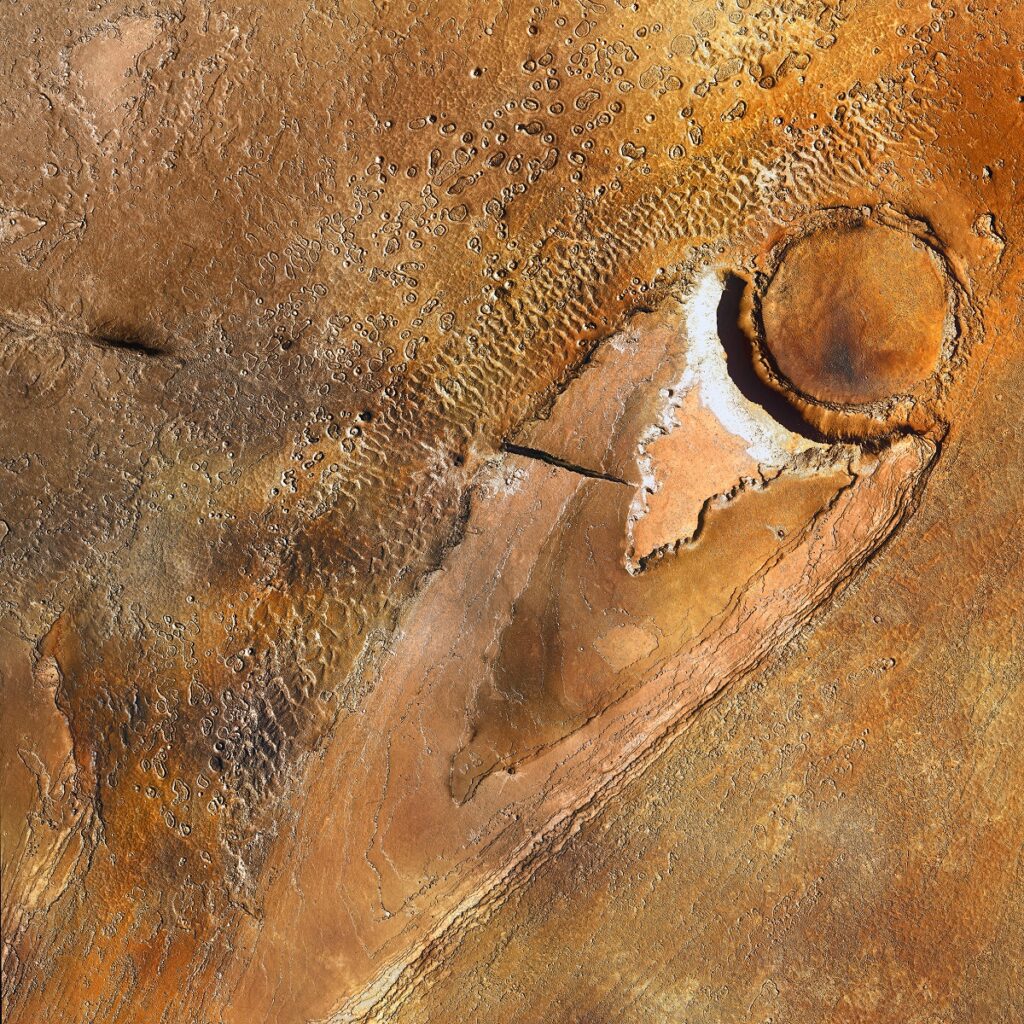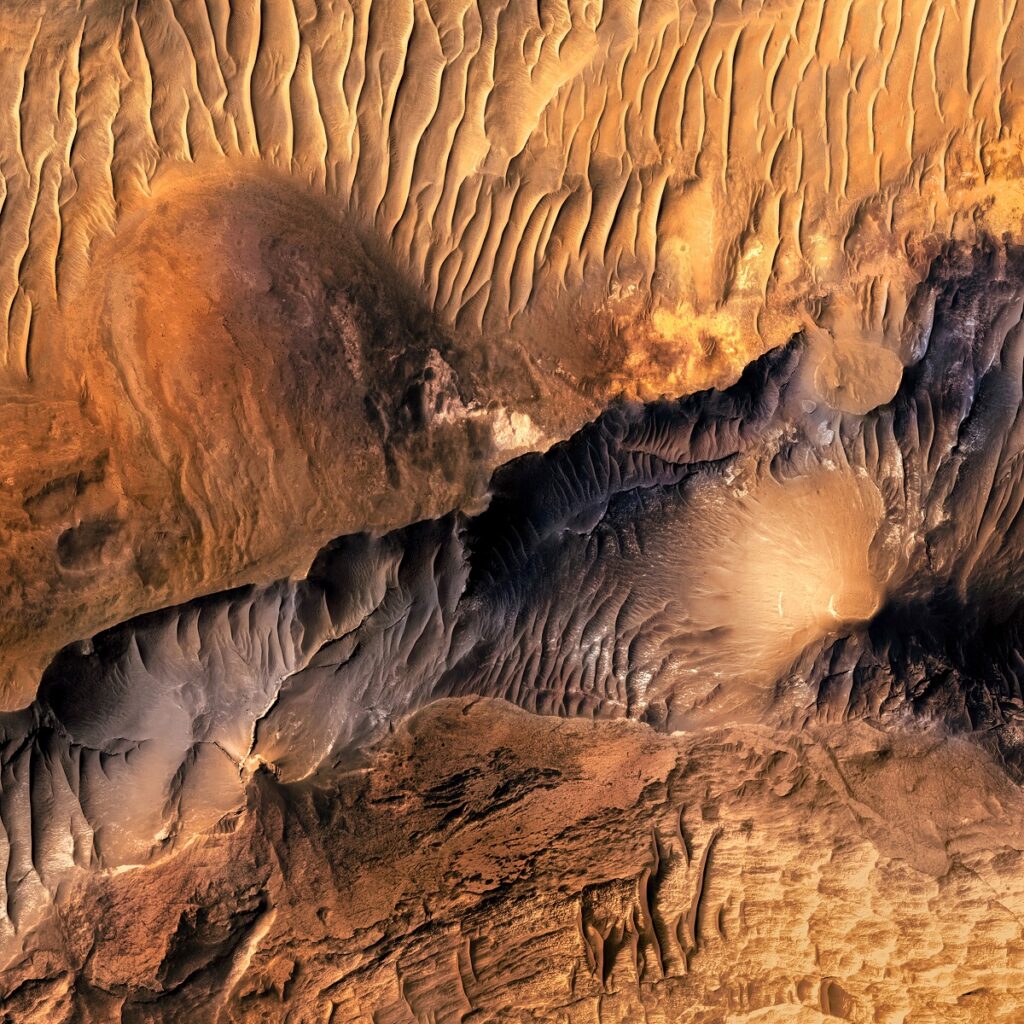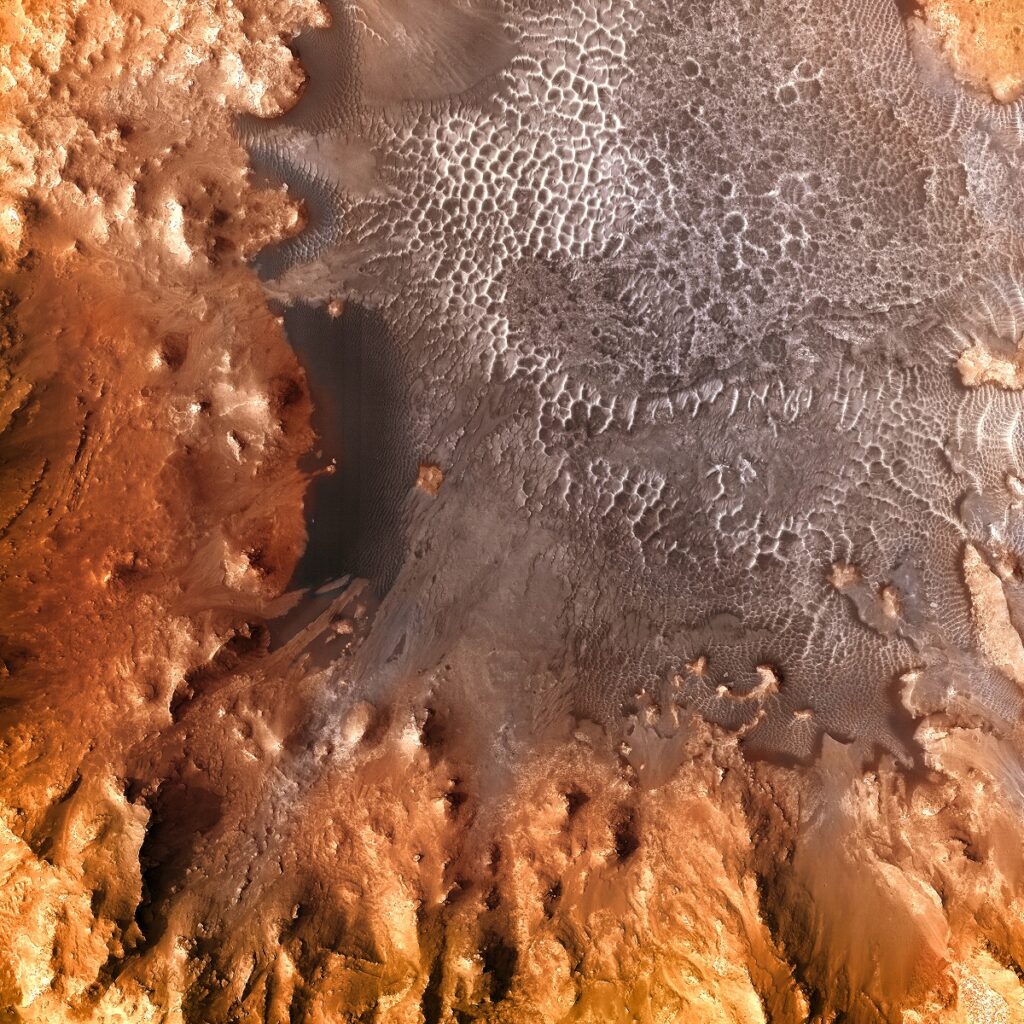Aurorae Chaos
Aurorae Chaos
We Build Custom 8K Mars Canvas Prints of Aurorae Chaos
Did you know we make
custom
8K Mars Canvas Prints
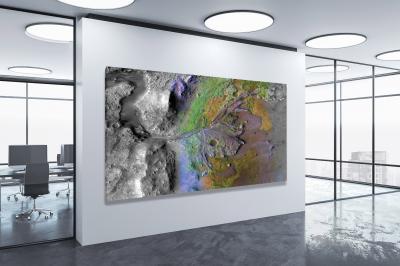
and
3D Marscapes
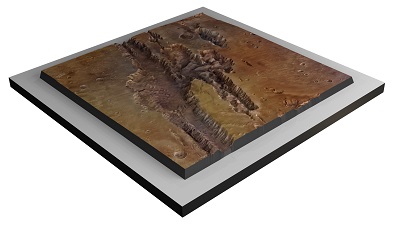
Aurorae Chaos
Aurorae Chaos is a striking geological feature on the surface of Mars, attracting the attention of planetary scientists and astrobiologists alike. Located southeast of the Valles Marineris canyon system, this chaotic terrain is an amalgamation of mesas, valleys, and scattered rocks. It has garnered widespread scientific interest due to its rich geological history and complex geomorphological features.
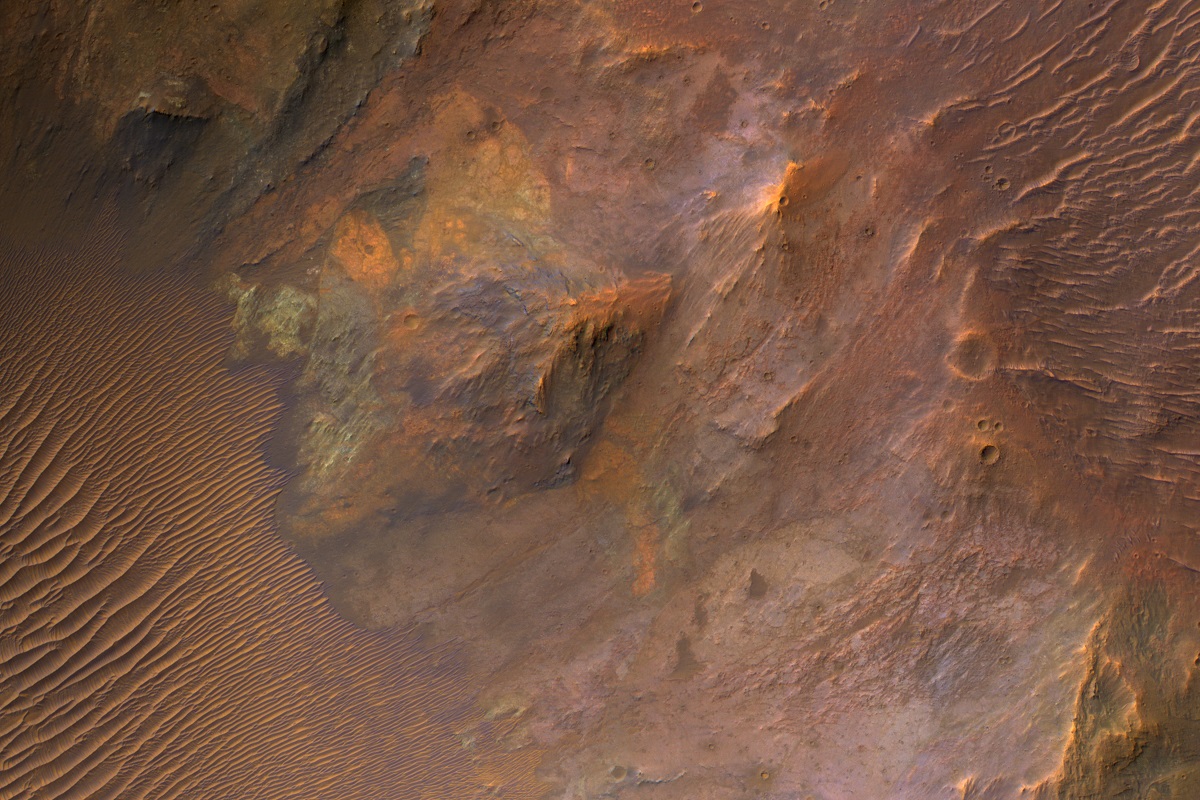 Crater South of Aurorae Chaos
Crater South of Aurorae Chaos
Geographical Location
Aurorae Chaos is intriguingly located in a strategic region of Mars that positions it as a linchpin for understanding the planet’s geological and climatic history. Specifically, this chaotic terrain can be found in the equatorial belt of Mars, situated between latitudes 3.9°S and 12.5°S and longitudes 322.4°E and 334.7°E. Covering a staggering 707 kilometers in length and approximately 700 kilometers in width, Aurorae Chaos serves as an important transitional region. It bridges the gap between the ancient, heavily cratered southern highlands and the geologically younger, smoother plains in the north. Because of its unique location, this area offers an unparalleled vantage point to observe and analyze Mars’ geophysical properties and the shifts it has undergone over billions of years. Its closeness to other major Martian geographical features, such as the awe-inspiring Valles Marineris canyon system, makes Aurorae Chaos a central point of study for comprehensive understanding of the interlinked geological and climatic processes that have shaped the Martian landscape.
Advertisement
Sample Marscapes
Geological Composition
The geological composition of Aurorae Chaos is nothing less than a captivating mosaic that has baffled and amazed scientists. It serves as an invaluable laboratory for the in-depth study of Mars’ geological timeline. The terrain is predominantly characterized by rocks of volcanic origin, mainly basaltic in nature, suggesting an active volcanic history. In addition to these basaltic rocks, sedimentary deposits litter the landscape, offering compelling evidence of both water-based depositional and aeolian activities. Advanced techniques, such as spectroscopic analyses, have revealed an even more complex story. A wide array of minerals, including but not limited to clays, sulfates, and perhaps even hydrated salts, has been identified. These multi-layered mineralogical signatures provide strong indications that the region has been subjected to a diverse set of environmental conditions over its existence, most notably scenarios involving the presence of liquid water.
Significant Discoveries
Evidence of Ancient Water Bodies
Among the most groundbreaking discoveries in Aurorae Chaos is the definitive evidence of features that strongly hint at the presence of ancient bodies of water. Cutting-edge, high-resolution imaging technology, along with detailed topographic data, have identified numerous valleys, channel networks, and landforms that strongly resemble remnants of dried-up lakes. These monumental discoveries give considerable weight to theories proposing that Mars once possessed a water-rich environment capable of potentially supporting microbial life.
Complex Layering
Aurorae Chaos presents a multifaceted geological tableau that features complex layering of rocks. This is especially visible on the walls of its mesas. These layers give scientists invaluable insights into Mars’ intricate geological history. Strata, sediment deposition, erosional patterns, and even signs of tectonic activities are visible, revealing a dynamic history influenced by a myriad of factors ranging from climatic shifts to geological transformations.
Scientific Missions
Aurorae Chaos has been a focal point for a multitude of scientific missions designed to unravel its enigmatic features and history. Among the most noteworthy are NASA’s Mars Reconnaissance Orbiter (MRO) and the European Space Agency’s Mars Express. The MRO has provided high-resolution imagery and vital spectroscopic data that have furthered our understanding of the mineralogical diversity of the region. Mars Express has contributed extensively to the compilation of topographical and compositional data. Earlier missions, such as the Mars Global Surveyor, laid the foundational datasets that have been pivotal in shaping modern research and interpretations related to Aurorae Chaos.
Geomorphological Features
The geomorphology of Aurorae Chaos is a vibrant and intricate tapestry that reflects the planet’s tumultuous history. It features a blend of chaotic terrains, showcasing disintegrated and collapsed regions alongside mesas that seem to have been uplifted through geological activity. This juxtaposition of features provides a captivating story of dynamic processes that have influenced the Martian surface. The presence of erosional elements like gullies, valleys, and channels strongly indicates that water flows once shaped this landscape. In addition, signs of aeolian (wind-based) processes are evident through features such as wind streaks and dust devil tracks. The intricate patterns left by landslides and rockfalls add yet another layer to this rich geomorphological narrative, making Aurorae Chaos a comprehensive case study for understanding Martian history.
Aurorae Chaos stands as a monumental feature that encapsulates a vast array of geological, climatic, and potentially biological histories of Mars. Its intricate geological composition and complex geomorphological features make it a focal point for scientific exploration. Significant discoveries, especially those indicating a water-rich past, make this region a compelling subject for future missions. As our understanding of Aurorae Chaos grows, so does its potential to unlock the secrets of Mars’ history and perhaps, its capability to have supported life.
More About Mars
Contact us today to learn more about our 3D services and how we can help you achieve your goals.
